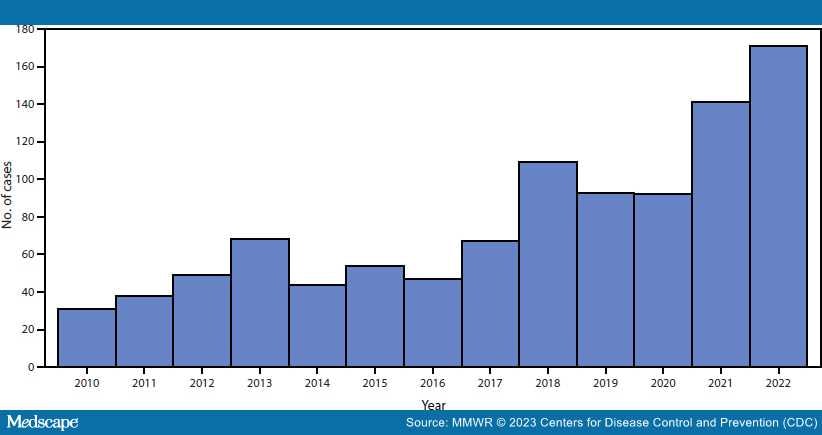Abstract and Introduction
Abstract
Fleaborne typhus (also known as murine typhus), a widely distributed vectorborne zoonosis caused by Rickettsia typhi, is a moderately severe, but infrequently fatal illness; among patients who receive doxycycline, the case-fatality rate is <1%. Fleaborne typhus is a mandated reportable condition in California. Reported fleaborne typhus cases in Los Angeles County have been increasing since 2010, with the highest number (171) reported during 2022. During June–October 2022, Los Angeles County Department of Public Health learned of three fleaborne typhus–associated deaths. This report describes the clinical presentation, illness course, and methods used to diagnose fleaborne typhus in these three cases. Severe fleaborne typhus manifestations among these cases included hemophagocytic lymphohistiocytosis, a rare immune hyperactivation syndrome that can occur in the infection setting; myocarditis; and septic shock with disseminated intravascular coagulation. Increased health care provider and public health awareness of the prevalence and severity of fleaborne typhus and of the importance of early doxycycline therapy is essential for prevention and treatment efforts.
Introduction
Fleaborne typhus is transmitted from infected fleas by inoculation of flea feces into the flea bite site, a skin abrasion, or mucous membranes.[1] The Oriental rat flea (Xenopsylla cheopis), a parasite of rats, is the historical vector.[2] The cat flea (Ctenocephalides felis), whose principal host is the domestic cat (but which is also found on opossums, dogs, and rats) is the predominant vector in suburban areas of the United States*.[3] Signs and symptoms of fleaborne typhus include fever, headache, a palm- and sole-sparing rash, hepatitis, and thrombocytopenia.[4] Approximately one third of infected patients require intensive care for associated aseptic meningitis, seizures, adult respiratory distress syndrome, or septic shock;[4] however, among patients who receive doxycycline therapy, the case-fatality rate is <1%.[5] Most current cases in the United States are identified in California, Hawaii, and Texas.[4] During 1985–2015, among 3,048 fleaborne typhus cases in Texas, 11 (0.4%) were fatal.[6] The disease is endemic in Los Angeles County (LAC), and reporting is mandated in California (Figure). Before 2022, the most recent fleaborne typhus–associated death in LAC was reported in 1993.
Figure.
Fleaborne typhus cases, by year — Los Angeles County, California* 2010–2022
*Excluding the cities of Pasadena and Long Beach; data include confirmed, probable, and suspected cases.
Morbidity and Mortality Weekly Report. 2023;72(31):838-843. © 2023 Centers for Disease Control and Prevention (CDC)












